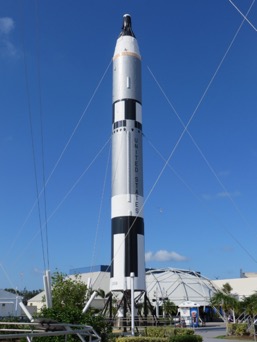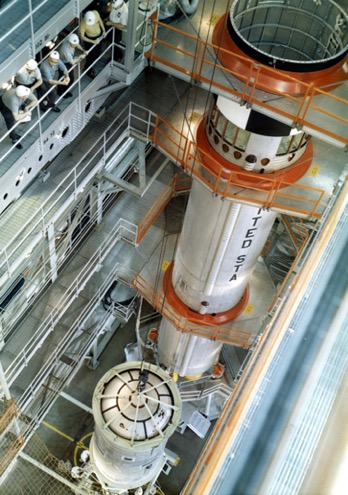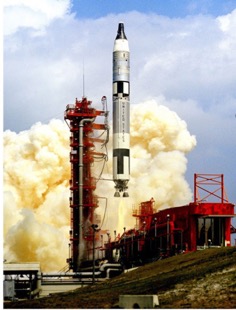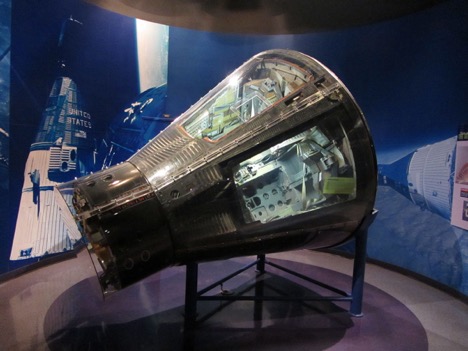Astronaut Tom Jones is a 2018 U.S. Astronaut Hall of Fame inductee and a familiar face as one of the Astronauts of the Day at Kennedy Space Center Visitor Complex. Here, as a guest writer on The Payload blog, he remembers the first rocket he ever saw, the Titan II.
Whenever I speak at Kennedy Space Center Visitor Complex, hosting Astronaut Encounter, I always pay a visit to the tallest rocket standing in the Rocket Garden, the Martin Marietta company’s Gemini-Titan II.

I remember it well because it was the first real rocket I ever saw. Growing up in a suburb of Baltimore, Maryland, I lived just a couple of miles from Martin’s Titan II assembly building. There, from 1964 through 1966, the company was stacking and testing these rockets to carry the Gemini astronauts into space. The Titan II was an Air Force intercontinental ballistic missile, designed to carry a 9-megaton nuclear warhead to the other side of the world. NASA chose this powerful booster to propel the Gemini spacecraft into orbit and my town was, for a little while, one of the key locations in the Space Race of the 1960s. The Gemini Program helped NASA learn in-orbit techniques needed to go to the Moon by 1970.

As a 10-year-old Cub Scout in 1965, my Cub Pack took a field trip to the Martin Marietta factory during an open house. I stood there on the factory floor, in awe at the sight of these 100-foot-tall rockets being built to carry our astronauts into space. The rockets I saw were built to carry Gemini 7 and 8 into space late 1965 and early 1966.

Those Titan IIs made an indelible impression on me, and from that moment on I read everything I could about the job of being an astronaut— what qualifications were required by NASA and how the astronauts would fly to and land on the Moon. It’s safe to say the Titan II launched me on my career path toward becoming an astronaut.
Here at Kennedy Space Center Visitor Complex, you can see the Titan II, get close to and peer inside the Gemini 9 spacecraft and learn the stories of the Mercury, Gemini and Apollo astronauts. Of course, you can see the ship that I flew, space shuttle Atlantis and get almost close enough to touch her. I lived on Atlantis for 13 days in 2001, helping build the International Space Station while leading three spacewalks.
On your visit, look up at some awesome history, be inspired, learn how we’ll return to the Moon, and tackle the challenges of exploring Mars. We’ve got an amazing story to tell and we’re looking for explorers who want to play an exciting role in our nation’s future.

About the Author
Tom Jones flew four space shuttle missions, the last on Atlantis to the International Space Station. He speaks frequently at the Kennedy Space Center Visitor Complex. His website is www.AstronautTomJones.com.
Interested in hearing more from Tom Jones? See him during Astronaut Encounter in November at Kennedy Space Center Visitor Complex.




